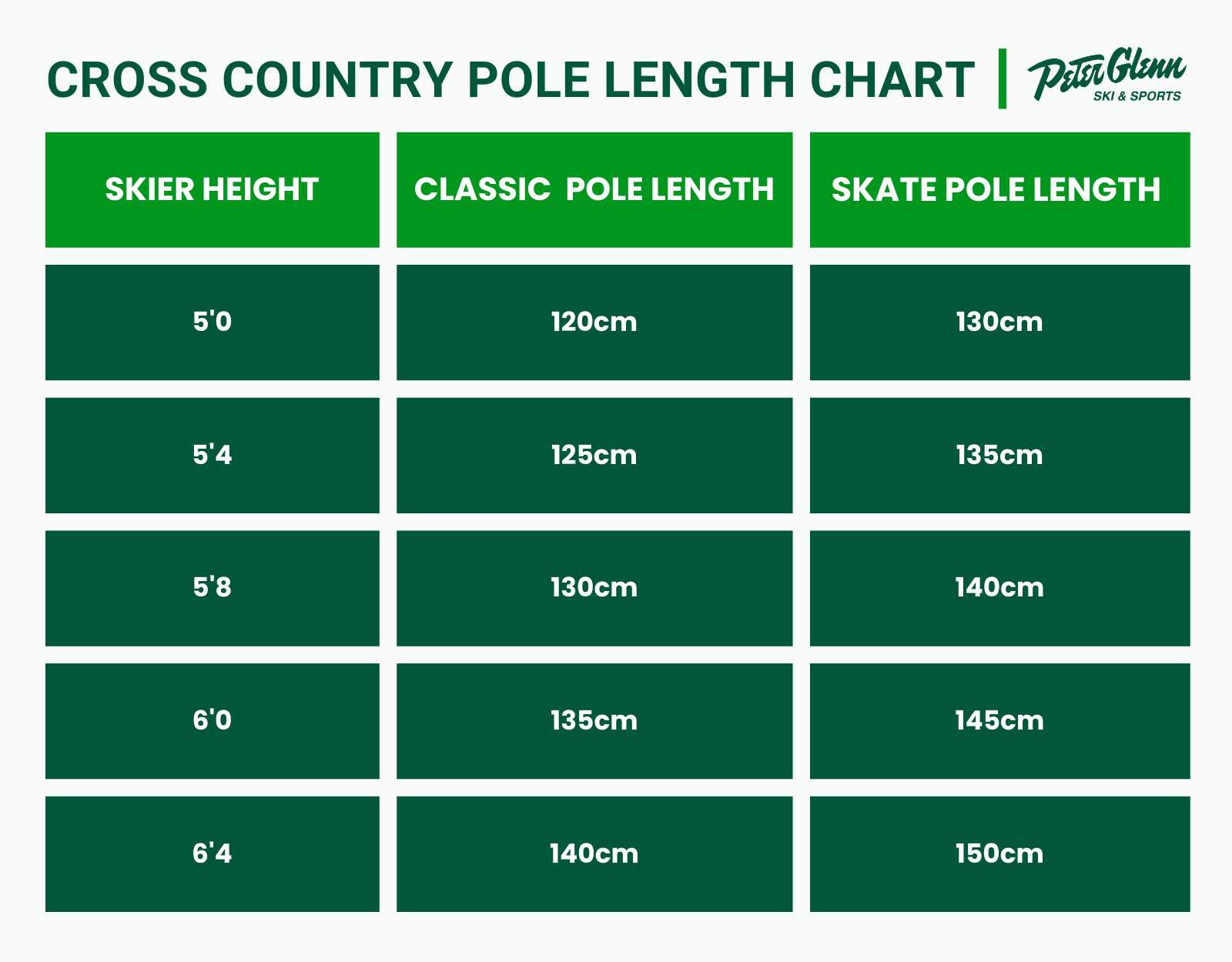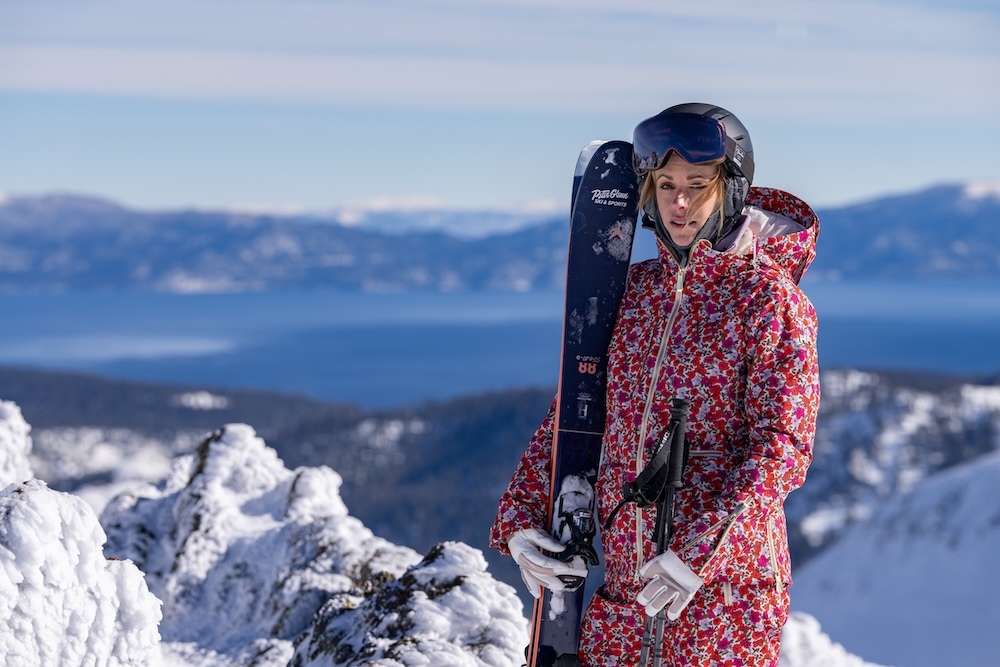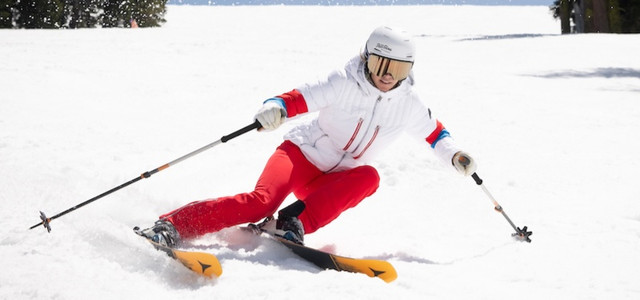Cross Country Ski Size Chart: Basic Sizing Principles
Posted by Peter Glenn Staff on Sep 22nd 2025
Table of Contents
The Short Answer: Getting the right size cross country skis makes a big difference in how you move on snow. The right length helps you glide smoothly, grip when you need to, and stay balanced on trails. Cross country skis that are too long can feel hard to control, especially for beginners, while shorter skis may limit your glide and efficiency.
Proper ski sizing combines your height and body weight measurements with your skill level to find the perfect match. Classic cross-country skis typically reach between your chin and head height, while skate skis run slightly shorter for better maneuverability. Backcountry skis often need extra length for floating through deep snow.
The type of skiing you plan to do shapes your size choice: classic skiing on groomed tracks, skate skiing for fitness and speed, or backcountry skiing in untamed terrain. At Peter Glenn, our selection includes the right ski length options for every skiing style, with expert guidance to help you make the best choice for your needs.
Understanding Basic Cross Country Ski Sizing Principles
Height plays a big role in cross country ski sizing, with each type of ski having specific ranges. Classic cross-country skis typically measure from chin to head height, coming in around your height (in inches) x 2.6 + 15 centimeters. Skate skis run slightly shorter, using a formula of height x 2.6 + 5 centimeters. Backcountry skis allow more flexibility, ranging within 2-6 centimeters of your height measurement. Use a ski size calculator as a tool to aid in the process of selecting the right fit.
Weight's Role in Sizing
Body weight significantly affects how skis perform. Heavier skiers need stiffer skis that won't bottom out during use, while lighter skiers work better with more flexible skis. The weight range for ski length varies by type of ski:
- Classic skis: Add 5-10cm for every 10 pounds above average weight
- Skate skis: Add 2-5cm for every 10 pounds above average weight
- Backcountry skis: Add 5-7cm for every 10 pounds above average weight
Skill Level Considerations
Beginners should start with shorter skis for better control:
- Classic skiing: Choose skis at chin height
- Skate skiing: Select skis at shoulder height
- Backcountry: Opt for skis at chest height
Intermediate skiers can move to standard length recommendations, while advanced skiers often prefer longer skis for maximum glide and speed. Advanced skiers typically choose:
- Classic: Head height or slightly above
- Skate: Forehead height
- Backcountry: Above head height for better float in deep snow
Remember that these guidelines work together; a heavier beginner might choose standard length despite their skill level, while a lightweight advanced skier might stick to shorter sizes for better control.
General Cross Country Ski Size Chart

Height Formula: Your height (inches) × 2.6 + 15 = Classic ski length in centimeters
Cross Country Pole Length Chart

Special Cross Country Ski Sizing Considerations
Snow Conditions and Sizing
The type of snow you'll encounter affects your cross country ski length. On a groomed track, a narrower ski works well for quick movement and tracking. For backcountry ski trips, longer skis help you float better in deeper snow. In powder conditions, add 5-10 cm to your usual ski length for better glide and less sinking.
Ski Base Options
Waxable classic skis need precise sizing because the kick zone (the middle section that provides grip) must match your body weight. These skis often run slightly longer than waxless classic ski models. Waxless skis, with their molded grip patterns, offer more flexibility in sizing and work well across various snow conditions.
Common Sizing Mistakes to Watch For
Many skiers choose longer skis, thinking length equals faster. This can make the skis harder to control and less enjoyable, especially for beginners. Others pick shorter skis, which reduces glide and efficiency on flat terrain. The biggest mistake is not considering weight range - a 180 cm ski designed for a 140-pound skier won't work properly for someone weighing 180 pounds, regardless of height.
Flex and Camber Matter
The ski's flex pattern (how it bends under your body weight) depends on proper ski sizing. A well-sized cross country ski should show a small gap under the middle when you're standing on it, about the width of a credit card. Too much gap means the ski is too stiff, while no gap indicates it's too soft for your weight range.

Find the Right Size with Peter Glenn
Picking the right cross country ski size comes down to matching your height and body weight with your type of skiing. For classic skiing, use your height in inches multiplied by 2.6 plus 15 cm. Skate skiing needs a similar calculation, but just add 5 cm instead. Consider going with a shorter ski if you're a beginner or lighter weight range, and a longer ski if you're an experienced skier or heavier.
Peter Glenn stocks a wide selection of cross country skis from top brands, with options for classic cross-country ski, skate ski, and backcountry ski styles. Our expert staff can help match you with the right ski length based on your measurements and skill level. We'll make sure you get the right size for smooth gliding and proper control on the trails.
Ready to find your ideal pair of skis? Shop Peter Glenn in-store or online today to browse our selection and get personalized ski sizing help from our knowledgeable team.



